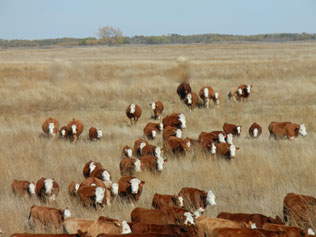.....Some common diseases found in horses....
Causes of laminitis:
- Overeating grain
- Overeating lush spring grass
- Eating grass clippings
- Too much work on hard surfaces
- Standing too long on hard surfaces
- Too much water when hot
The symptoms of laminitis are:
- The horse standing in such a way where his front feet are extended to take pressure off and relieve the pain (laminitis typically attacks the front feet, although it can attack all four feet)
- The horse lies down and refuses to get up
- The horse has a rapid pulse in the digital artery (located over the fetlock)
- The horse is in obvious pain (heavy breathing, glazed eyes)
- The classic “ring” around his hoof. This appears to make his hoof look wavy. A horse who has chronic laminitis (more than one bout of it) will have multiple rings around his hoof.
Tetanus(lockjaw):
- is a bacteria that enters the body at the sight of a wound or the umbilical cord stump in a foal. Its symptoms are early signs of colic and stiffness. Horses will develop spasms in the jaw, neck, hind legs and muscles around the wound.
- If this disease goes untreated, as it worsens, the horse will develop labored breathing. Stiffness develops in the front and hind legs.
- The tail is held out stiffly, ears are erect and nostrils will be flared. The jaws will contract so that the horse is unable to open his mouth. In the final stage, the horse will lie down and die of respiratory paralysis.
Treatment:
- The wound must be opened widely, removing all infected tissue. It must be washed thoroughly and penicillin injected into the wound. Wounds must be left open to allow for drainage.
Prevention:
- Thoroughly clean and treat all new wounds. This will prevent most cases of tetanus. Foals should be given a tetanus shot when they are born.
West Nile Virus(WNV):
- Is a mosquito-borne virus that causes encephalitis (inflammation of the brain) and/or meningitis (inflammation of the lining of the brain and spinal cord).
- Typical signs include muscle trembling, skin twitching, ataxia (uncoordination, stumbling, limb weakness) that appears suddenly.
In some cases it appears gradually and worsens. Sleepiness, dullness, listlessness, facial paralysis (droopy eyelids, lower lip), difficulty with urination and defecation, and an inability to rise are also signs. Some horses may develop mild fevers, blindness and seizures.
Treatment:
Equine Influenza:
- an upper respiratory disease that is similar to the flu in humans. Its symptoms are a nasal discharge, cough, fever and loss of appetite.
Treatment:
- Isolate this horse from the rest of the herd. Stall rest is very important. Butazolidin is used to control fever and muscle stiffness.
COPD - Chronic Obstructive Pulmonary Disease in horses (also known as Heeves):
- is a lung disease that is like asthma in humans. It is more common in colder climates where horses are stalled most of the time in the winter months. It is usually found in horses 7 years and older. It is rare in warmer climates where horses are pastured most of the time.
- Some of the symptoms of this disease are coughing or heeving to expel air and dust particles from the lungs. Coughing, weight loss and lack of energy are usually good indicators.
Prevention:
- Turn horses out as much as possible. Keep the stall and barn area free of dust and mold and never use dusty or moldy hay. Use rubber mats or shredded paper in stalls instead of shavings or straw.
Strangles:
or Streptococcus Equi, Equine Distemper
- Is caused by an easily transmissible bacterium called Streptococcus equi. The bacteria can easily be carried from horse to horse, by human hands and clothing, brushes, buckets and persist on stable surfaces for weeks. Young horses are more susceptible to strangles than mature horses over five years of age, although horses can contract strangles at any age, especially if their immune system is already weakened. Because the bacteria is so easily transmissible, one horse can quickly infect a whole stable, or one horse at a horse show can spread the illness more widely. Any environment where horses are coming and going frequently is ideal for the spread of strangles.
Symptoms:
- It may only take a few days from the time of infection to when actual symptoms are evident. Horses that have been infected with Streptococcus equi will quickly go off their feed. Their temperature will rise rapidly to (103-106°F [39.4-41.1°C]) from the normal of 98.5F to 101F (36.9C to 38.3C). This is why it is important to know what your horse’s normal TPRs are, so you can determine what is normal and what is not.
- The horse may develop a wet cough and its breathing may sound raspy. The normal clear mucous in its nostrils turns to yellowish green and may become copious. You may be able to feel swelling between the lower jaw bones and the swelling can fill the area behind the cheek bone, all the way down the sides of the face. The swelling may become quite hard and distended and can eventually rupture. The swelling may also obstruct the horse’s breathing, hence the name ‘strangles’. Older horses, who may have partial immunity may only show mild symptoms.
- There are three complications that can occur that may be fatal. Bastard strangles is when the infection travels to other places in the body like the brain, stomach, or lungs. The lymph nodes in those areas can then rupture with fatal results.
- Purpura haemorrhagic can occur, a inflammation of the blood vessels that can occur when the animal is recovering causing oedema of the head, legs or other areas of the body.
- Horses generally recover in about three weeks, but stay contagious for up to six weeks or more. But a horse may also become a carrier, carrying the infection in its glands, and potentially infecting any other horse that comes in contact.
There are several other problems that can occur that are worrisome but not necessarily fatal including inflammation of the heart muscle, anemia, tissue inflammation and paralysis of the throat muscles that cause roaring.
Treatment:
- Strangles can be easily diagnosed by testing the nasal mucous. If it is possible to catch the illness in its very early stages, penicillin can be administered with good results. However, as the illness progresses, antibiotics are less effective and may even cause complications such as bastard strangles. With or without antibiotics, good care that includes scrupulous hygiene is essential. Any burst lymph nodes should be allowed to drain and cleaned with the antiseptic recommended by your veterinarian.
Prevention:
- If a horse suspected to have strangles quarantine is necessary and any new horse to a stable should be kept separate to make sure it has no diseases to pass along. Anything that comes in contact with the horse, equipment including feed and water buckets, brushes, blankets, human hands should be well cleaned. Vaccinations are available, but so far, their life span is very short. If a stable is infected with strangles it should be closed to new horses and people should be advised to take precautions. Horses should not travel anywhere they might spread the disease, even if they appear to be recovered.







